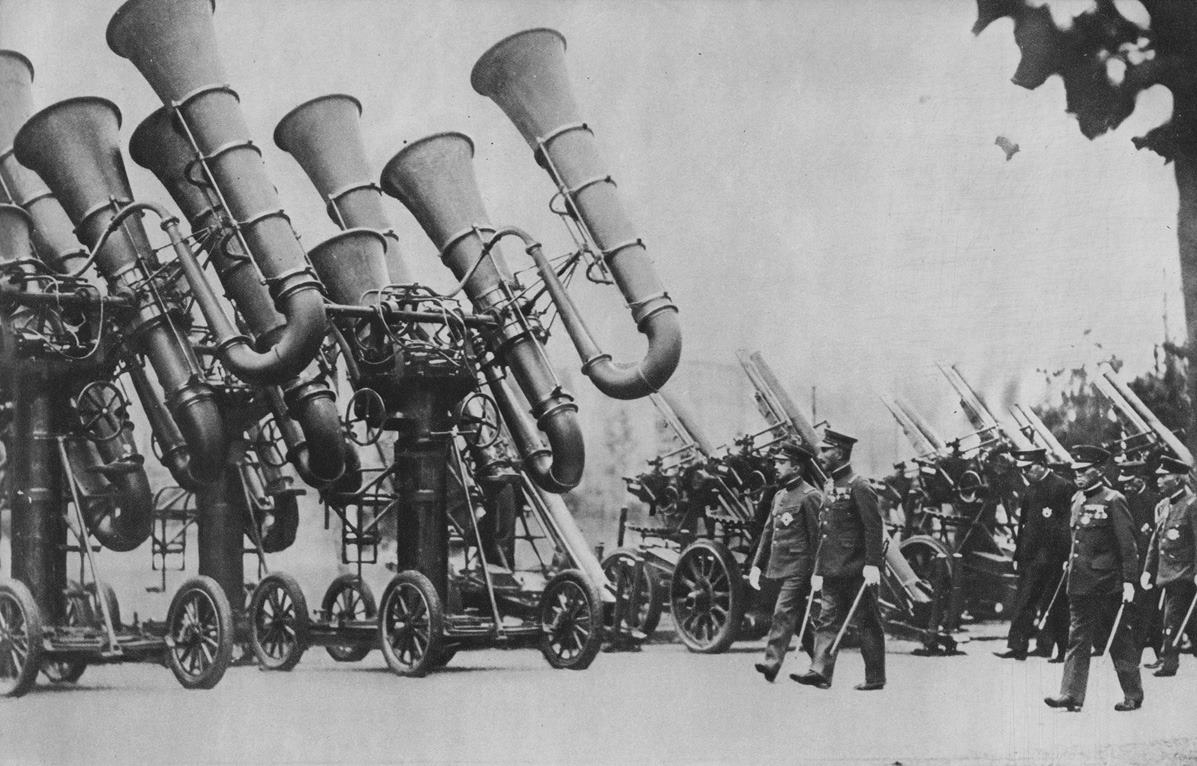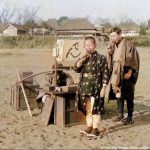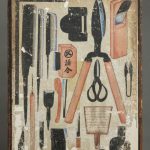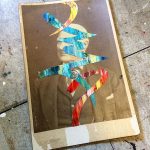Acoustic location is the technology of identifying the location of objects by detecting sound waves they emit. It was quickly adopted by the military in the early 1900s as a way of locating aircrafts and submarines.
Despite being short-lived – the technology was quickly made obsolete by the development of radars – the contraptions, which typically involved large horns connected to the operator’s ears, made for some surreal imagery.
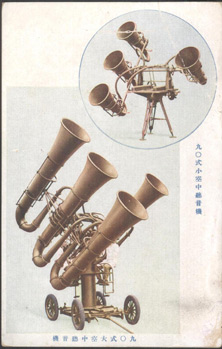 In Japan especially, the oversized “Type 90 Large Air Sound Detector” took on the nickname War Tuba after an incredible photo that originally appeared in LIFE Magazine in 1936, resurfaced. In the photograph, Emperor Hirohito and possibly Hideki Tojo can be seen inspecting the acoustic locators mounted on 4-wheel carriages.
In Japan especially, the oversized “Type 90 Large Air Sound Detector” took on the nickname War Tuba after an incredible photo that originally appeared in LIFE Magazine in 1936, resurfaced. In the photograph, Emperor Hirohito and possibly Hideki Tojo can be seen inspecting the acoustic locators mounted on 4-wheel carriages.
In another photograph from 1932, operators can be seen using a slightly smaller version of the War Tuba that has been stationed to the ground on a tripod.
These acoustic location devices were, of course, used in other countries besides Japan. But personally I find these photos the most interesting.
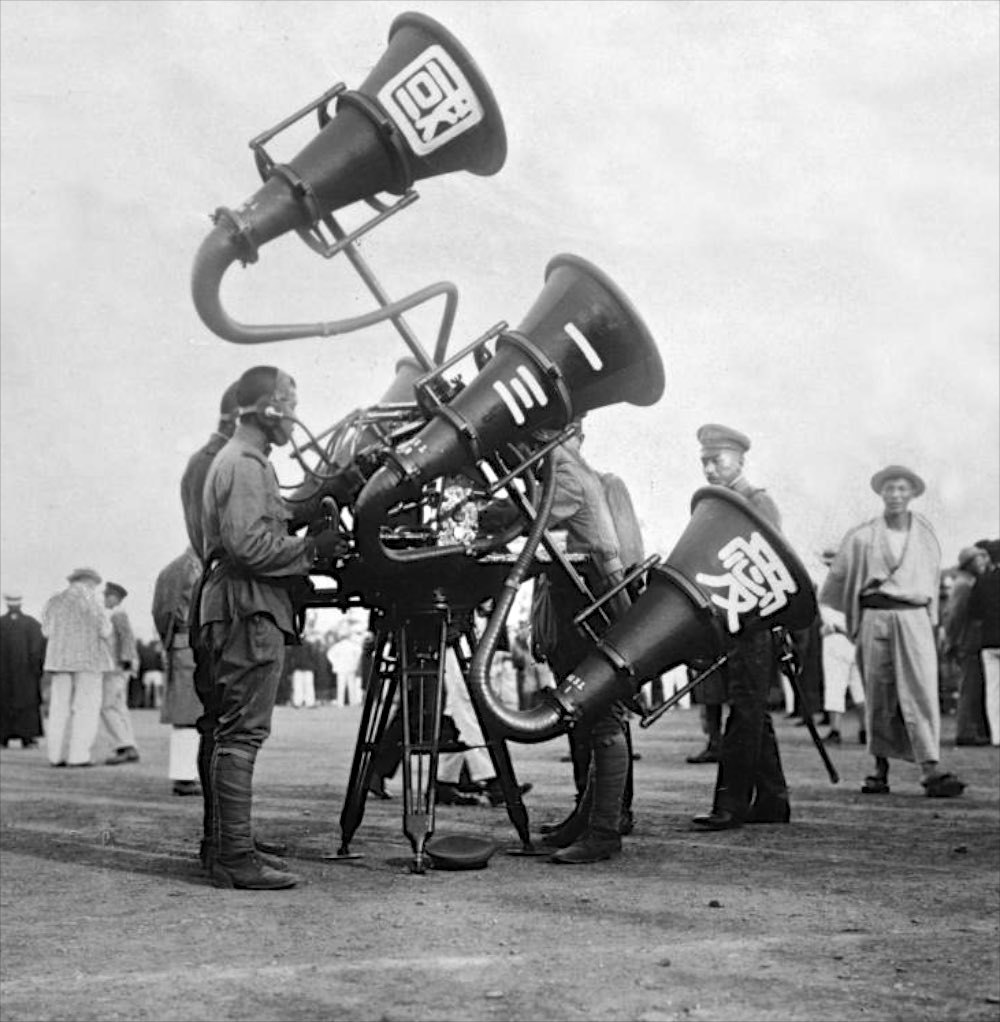
a smaller version of the War Tuba in 1932 (Pictura Historia)
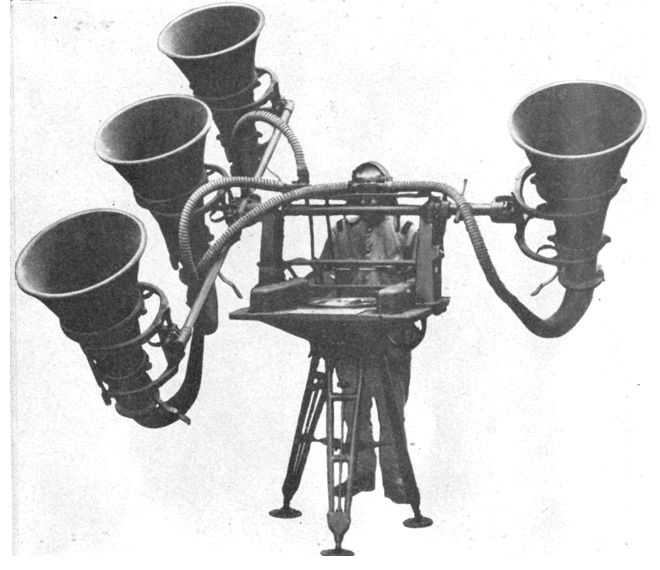
The Japanese Type 90 Small Detector: 1930s (Douglas Self)
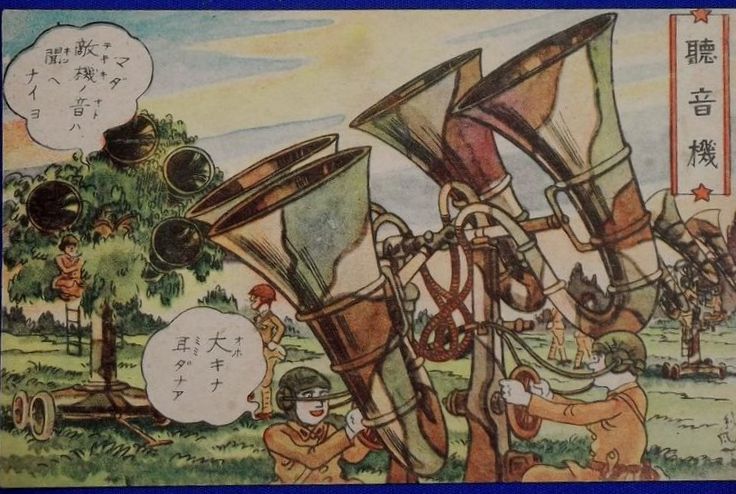
An illustrated anti-air-raid postcard show soldiers operating the War Tubas. “Those are some big ears,” says one soldier. “I don’t hear enemy aircrafts yet,” says another.

